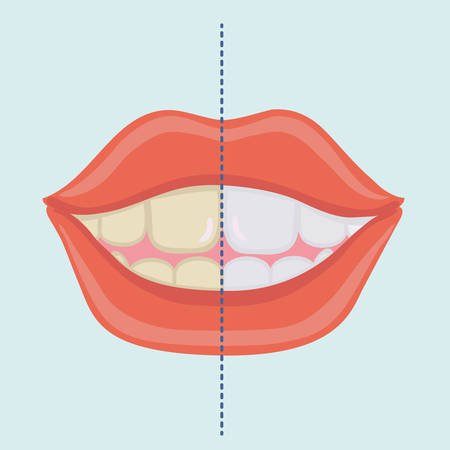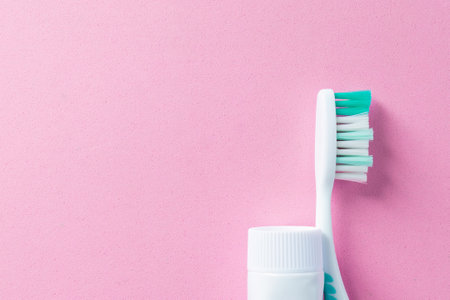Understanding Cosmetic Bonding and Its Vulnerabilities
Cosmetic bonding is a popular and minimally invasive dental procedure used to repair chips, cracks, gaps, or discoloration in teeth. This technique involves applying a tooth-colored composite resin directly to the surface of your teeth, sculpting it to the desired shape, and then curing it with a special light. The materials most commonly used in cosmetic bonding are composite resins made from a blend of plastic and fine glass particles, which allow for a natural look and feel. However, while cosmetic bonding offers a quick and cost-effective solution for minor dental imperfections, it comes with certain vulnerabilities. Unlike natural enamel or more durable restorations like porcelain veneers or crowns, composite resin is more porous and softer by comparison. This means it can absorb pigments from foods and drinks more easily, leading to noticeable staining over time. Additionally, composite bonding is more prone to wear and abrasion due to daily activities such as chewing or tooth brushing. Understanding these susceptibilities is key to taking proactive steps that will keep your bonded teeth looking bright and beautiful for years to come.
2. Daily Habits to Keep Your Bonding Bright
When it comes to preserving the appearance and longevity of your cosmetic bonding, your daily oral hygiene routine plays a critical role. Unlike natural enamel, bonding resin is more porous and prone to discoloration and wear, so consistent care is key. Below are practical steps to optimize your brushing, flossing, and mouthwash habits specifically for bonded teeth.
Brushing: Choosing the Right Tools and Technique
Use a soft-bristled toothbrush to avoid scratching or dulling the surface of your cosmetic bonding. Pair this with a non-abrasive toothpaste; steer clear of whitening toothpastes that often contain harsh particles or peroxide, which can erode the resin and lead to uneven color. Brush at least twice daily using gentle, circular motions, focusing on all surfaces of your teeth while paying extra attention around the bonded areas.
| Product Type | Recommended for Bonding? | Why |
|---|---|---|
| Soft-Bristled Toothbrush | Yes | Minimizes scratching and preserves shine |
| Abrasive Whitening Toothpaste | No | Can damage resin surface and cause stains |
| Non-Abrasive Gel Toothpaste | Yes | Gently cleans without harming bonding |
Flossing: Gentle but Thorough Cleaning
Daily flossing is essential for preventing staining between teeth and along the gumline—areas where food particles and plaque can easily accumulate around cosmetic bonding. Use a waxed or Teflon-coated dental floss, which glides more smoothly and reduces the risk of snagging or chipping the bonded material. Gently slide the floss between teeth, curving it around each tooth rather than snapping it down.
Mouthwash: Alcohol-Free Is Best
Mouthwash can help maintain oral health and freshness, but opt for an alcohol-free formula. Alcohol-based rinses can weaken bonding over time, leading to premature wear or discoloration. Look for mouthwashes labeled as safe for dental work or those formulated for sensitive teeth. For added benefit, choose options with fluoride to help strengthen underlying enamel and protect overall tooth integrity.
Your At-Home Routine Matters Most
By making intentional choices about your daily oral hygiene products and techniques, you’ll significantly reduce the risk of staining and wear on your cosmetic bonding. This not only keeps your smile looking vibrant but also extends the lifespan of your dental investment.

3. Foods and Drinks to Avoid or Limit
When it comes to keeping your cosmetic bonding looking fresh and natural, what you eat and drink makes a big difference. Some foods and beverages are notorious for causing stains or accelerating wear on dental bonding materials, so being mindful about your choices is key.
The Main Offenders: What to Watch Out For
Certain drinks like coffee, tea, red wine, and cola are among the top culprits for staining bonded teeth. Their dark pigments can easily seep into the porous surface of bonding material, leading to discoloration over time. Similarly, richly colored foods such as blueberries, blackberries, cherries, tomato sauce, soy sauce, and curry can all contribute to unwanted stains. Acidic foods—think citrus fruits and vinegar-based dressings—can also weaken the bonding material, making it more vulnerable to both stains and wear.
Smart Ways to Enjoy Your Favorites
You don’t have to completely cut out your favorite treats to protect your smile. Instead, try these practical strategies:
Use a Straw
Sipping dark beverages through a straw minimizes direct contact with your bonded teeth.
Rinse or Brush Afterwards
After enjoying stain-prone foods or drinks, rinse your mouth with water or brush your teeth within 30 minutes to reduce residue.
Limit Frequency
Try to limit how often you consume highly pigmented or acidic items rather than indulging throughout the day.
Add Crunchy Fruits and Veggies
Foods like apples, carrots, and celery can help naturally clean your teeth between meals by scrubbing away surface particles.
Being Mindful Without Missing Out
Ultimately, balance is everything. By identifying which foods and drinks pose the biggest risk—and taking small steps to minimize their impact—you can enjoy the things you love without sacrificing the appearance or longevity of your cosmetic bonding work.
4. Smart Lifestyle Choices to Protect Your Smile
When it comes to keeping your cosmetic bonding work looking fresh, your daily habits and lifestyle choices play a major role. While professional care is essential, the way you live can either extend the life of your dental bonding or cause it to stain and wear prematurely. Let’s explore how common behaviors—especially those often overlooked—can impact the longevity and appearance of your smile.
Smoking, Vaping, and Their Effects
Both smoking and vaping introduce chemicals that not only stain natural teeth but also discolor cosmetic bonding material. Nicotine and tar penetrate the surface, leading to stubborn yellowing or brownish tints that are difficult to remove with standard brushing. Moreover, heat from these habits can make bonding resin more prone to wear and microcracks over time.
Comparing Lifestyle Impacts on Bonding
| Habit | Main Concern | Impact on Cosmetic Bonding |
|---|---|---|
| Smoking | Staining, chemical exposure | Persistent discoloration, increased wear |
| Vaping | Chemical exposure, heat | Color changes, possible weakening of resin |
| Nail Biting | Physical stress on teeth | Chipping or dislodging of bonding material |
| Pen Chewing | Repeated pressure, abrasion | Surface scratches, risk of cracks in resin |
| Coffee/Tea Drinking (frequent) | Pigment absorption | Gradual staining similar to natural enamel |
Avoiding Everyday Risks: Small Habits Matter Big Time
Biting your nails or chewing on pens might seem harmless, but these repetitive actions can put undue pressure on bonded teeth. This physical stress may cause small chips or even fracture the composite material over time. Even less obvious habits—like using your teeth as tools to open packages—can compromise both the structure and aesthetics of your dental bonding.
Your Best Moves for Long-Lasting Results:
- Quit smoking or vaping: Not only does this benefit your oral health overall, but it also preserves the brightness and strength of your cosmetic work.
- Avoid hard objects: Break the nail-biting and pen-chewing habit to keep your bonding smooth and intact.
- Be beverage-smart: Limit dark beverages or use a straw to minimize direct contact with bonding surfaces.
- Treat teeth gently: Never use them as tools for tasks better suited for scissors or bottle openers.
- Keep up with regular checkups: Early intervention can prevent minor issues from becoming big repairs down the line.
If you’re committed to getting the most out of your investment in cosmetic bonding, adjusting these everyday behaviors is just as important as choosing a skilled dentist. A few simple lifestyle tweaks can help you enjoy a healthy, beautiful smile for years to come.
5. Regular Dental Visits and Professional Upkeep
Staying ahead of potential issues with your cosmetic bonding isn’t just about home care—regular dental visits play a crucial role in maintaining the longevity and beauty of your bonded teeth. Routine professional cleanings help remove surface stains that daily brushing and flossing might miss, especially in those hard-to-reach areas where plaque tends to build up around bonding material. During these maintenance appointments, your dentist will use specialized tools and polishing agents designed specifically for cosmetic restorations, ensuring your bonding remains vibrant without compromising its integrity.
What should you expect during these visits? First, your dental hygienist will carefully inspect your bonded teeth for any signs of early staining or wear. They’ll look for subtle changes in color, texture, or fit, which can indicate the need for touch-ups or adjustments. Your dentist may also assess your bite and make sure the bonded areas are holding up well against daily chewing forces. If any issues are found, such as micro-cracks or slight discoloration, they can often be addressed immediately—saving you time and money compared to waiting until more significant repairs are needed.
Professional oversight is key to catching problems before they escalate. Dentists have the experience and technology to spot trouble early, whether it’s wear patterns from teeth grinding (bruxism), small chips, or the first hints of staining from coffee or red wine. With consistent check-ups every six months—or more frequently if recommended—you’re giving your cosmetic bonding the best chance to stay beautiful and functional for years to come.
6. What to Do If Your Bonding Shows Stains or Damage
Even with the best care, cosmetic bonding can sometimes show stains or minor damage over time. If you notice any discoloration, chips, or changes in the surface of your bonded teeth, it’s important not to panic—but also not to ignore the problem. Here’s what you should do if your bonding isn’t looking its best.
Know When to Call Your Dentist
If stains don’t come off with regular brushing and flossing, or if you spot cracks or rough edges on your bonded teeth, schedule an appointment with your dentist as soon as possible. Early intervention can prevent further wear and keep your smile looking natural. Don’t attempt DIY repairs—professional expertise is key to protecting both your dental work and your underlying tooth structure.
Repair Options for Cosmetic Bonding
Your dentist has several ways to fix stained or damaged bonding. In many cases, minor stains or surface scratches can be polished away in-office, restoring the shine and color match. For more significant discoloration or chips, your dentist might recommend reapplying new bonding material or making targeted repairs. These solutions are generally quick, comfortable, and far more effective than anything you can do at home.
Why Home Whitening Isn’t the Answer
It’s tempting to reach for over-the-counter whitening strips or gels when you see stains—but most whitening products only work on natural enamel, not on bonding materials. Using these treatments can actually make matters worse by brightening your surrounding teeth while leaving the bonded areas unchanged (or even more noticeable). Stick with professional guidance to maintain a consistent look across your entire smile.
Takeaways: Protect Your Investment
If you notice any issues with your cosmetic bonding, contact your dentist promptly for an evaluation and expert repair options. Avoid home remedies and whitening kits—your best bet for keeping bonded teeth beautiful is always professional dental care tailored to your needs.


